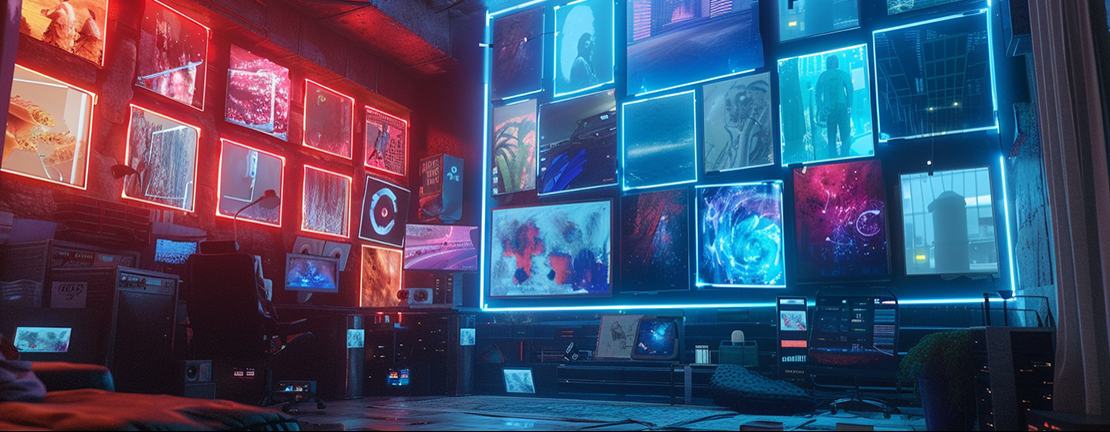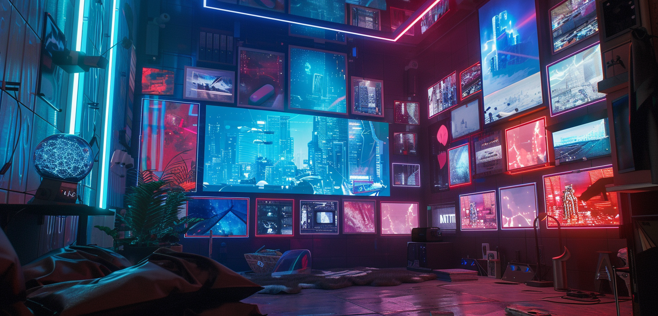 24 Sep 2024
24 Sep 2024ERC-404: The Future of NFT Fractionalization and Liquidity

The rise of Non-Fungible Tokens (NFTs) has transformed the digital asset landscape, turning digital art, collectibles, and virtual real estate into valuable, tradable assets. As the NFT market continues to grow, one significant challenge remains: the lack of liquidity and accessibility for high-value NFTs. Traditional NFTs are often indivisible, making it difficult for average investors to participate in the market for expensive digital assets. This is where NFT fractionalization comes into play, allowing multiple investors to own shares of a single NFT, thereby enhancing liquidity and democratizing access to high-value digital assets.

ERC-404: A New Standard for NFT Fractionalization
ERC-404 is an emerging Ethereum token standard designed specifically to address the limitations of traditional NFTs by enabling fractional ownership and enhancing liquidity. Unlike existing standards like ERC-721, which defines unique, indivisible tokens, or ERC-1155, which allows for both fungible and non-fungible tokens but does not inherently support fractionalization, ERC-404 introduces a novel approach by allowing NFTs to be divided into smaller, tradable units. This fractional ownership model opens up the NFT market to a broader audience, making high-value NFTs accessible to more investors.
Key features of ERC-404 include:
- Fractional Ownership
ERC-404 allows NFTs to be split into smaller, fungible units that can be individually owned and traded. This makes it possible for multiple investors to share ownership of a single NFT, thus lowering the entry barrier for high-value assets.
- Liquidity Provision
By fractionalizing NFTs, ERC-404 enhances liquidity in the NFT market. Fractional NFTs can be traded on decentralized exchanges, used as collateral in DeFi protocols, or included in liquidity pools, making it easier for holders to buy, sell, or trade their shares.
- Seamless Integration with DeFi Platforms
ERC-404 is designed to integrate smoothly with existing DeFi ecosystems, allowing fractional NFTs to participate in various financial activities like lending, borrowing, and yield farming. This integration provides NFT holders with additional ways to generate returns on their assets and further enhances market liquidity.
ERC-404 sets itself apart by bridging the gap between the worlds of NFTs and DeFi, making it a potentially transformative standard for the digital asset market.

The Need for NFT Fractionalization
As the NFT market continues to grow, the need for enhanced liquidity and accessibility has become increasingly apparent. Fractionalization allows NFTs to be divided into smaller, tradable pieces, making high-value assets more accessible to a broader audience. Current NFT ownership models often face liquidity challenges, as assets are typically indivisible and require significant capital to own outright. ERC-404 addresses these issues by enabling fractional ownership, which not only democratizes access but also increases liquidity in the market, allowing for easier buying, selling, and trading of NFT fractions across various platforms.
Benefits of ERC-404 for NFT Holders and Investors
ERC-404 introduces several significant benefits for NFT holders and investors, enhancing the overall dynamics of the NFT market. By enabling fractional ownership, ERC-404 provides improved liquidity, allowing assets that were previously difficult to trade to become more accessible and fluid in the market. This increased liquidity facilitates easier buying, selling, and trading of fractional NFTs, making the market more dynamic and responsive.
Enhanced Liquidity
ERC-404 addresses one of the biggest challenges in the NFT space—liquidity. By fractionalizing NFTs, it allows holders to sell portions of their assets rather than waiting for a single large buyer. This mechanism not only improves market fluidity but also makes NFTs more attractive as an investment vehicle.
Access to High-Value Assets
Fractional ownership democratizes the investment landscape by allowing a broader range of investors to participate in high-value NFTs. Instead of needing substantial capital to purchase entire assets, investors can buy fractions, thus enabling more people to own a piece of rare and expensive digital assets. This inclusivity fosters a more diverse and engaged market.
Integration with DeFi
ERC-404 seamlessly integrates with DeFi applications, unlocking new use cases for fractionalized NFTs. Holders can use these fractions as collateral for loans, participate in staking, or engage in various DeFi protocols. This integration amplifies the utility of NFTs beyond mere collectibles, enhancing their value proposition in the digital economy.
Overall, ERC-404 stands to significantly impact the NFT ecosystem, making it more liquid, accessible, and integrated with the broader DeFi landscape, thus setting a new standard for the future of digital asset ownership and investment.

Technical Aspects of ERC-404
ERC-404 introduces a robust technical framework designed to enable the fractionalization of NFTs, significantly enhancing their usability and liquidity. This section provides an overview of the key technical specifications that distinguish ERC-404 from other standards, the process of minting and managing fractional NFTs, and the security measures in place to protect fractional NFT holders.
Overview of the Technical Specifications of ERC-404
ERC-404 builds upon existing NFT standards like ERC-721 and ERC-1155, adding functionalities specifically for fractional ownership. It introduces a set of protocols that allow an NFT to be divided into multiple fractions, each represented by a token that can be individually owned, traded, or used in DeFi applications. These fractional tokens are fully compliant with ERC-20 standards, ensuring seamless integration across the Ethereum ecosystem.
How ERC-404 Enables the Minting and Management of Fractional NFTs
The fractionalization process begins with the minting of an NFT under the ERC-404 standard. Once minted, the NFT can be locked into a smart contract, which then issues ERC-20 tokens representing the fractional ownership of the asset. These tokens can be freely traded on decentralized exchanges, used as collateral in DeFi protocols, or held for speculative purposes. The smart contract handles all aspects of fractional management, including transfers, trades, and the eventual recombination of fractions back into the whole NFT.
Security Considerations and Measures in ERC-404 to Protect Fractional NFT Holders
ERC-404 places a strong emphasis on security to protect the interests of fractional NFT holders. Smart contracts are rigorously audited to prevent vulnerabilities such as unauthorized minting or double-spending of fractional tokens. Additionally, ERC-404 incorporates features like time-locked tokens and multi-signature approvals to enhance the security of transactions involving fractional NFTs. By implementing these measures, ERC-404 ensures that the fractionalization process is not only efficient but also secure, providing peace of mind to investors and users.
Through its advanced technical framework, ERC-404 not only facilitates fractional ownership of NFTs but also ensures a secure and efficient market environment, paving the way for broader adoption and innovation in the digital asset space.

Use Cases and Applications
The introduction of ERC-404 opens up a wide range of possibilities for various industries by enabling fractional ownership of NFTs. This standard not only enhances liquidity and accessibility but also introduces innovative ways for creators, investors, and communities to interact with digital assets. Below are some prominent use cases and applications of ERC-404.
Art and Collectibles
ERC-404 is set to revolutionize the art and collectibles market by allowing high-value digital art pieces and rare collectibles to be fractionalized. This makes it possible for a broader audience to invest in valuable assets that would otherwise be out of reach. Fractional ownership democratizes access, enabling more people to hold a stake in artworks by renowned digital artists or limited-edition collectibles. Case studies include platforms like Fractional and Niftex, where ERC-404 has been implemented to fractionalize digital art pieces, enhancing their market liquidity and accessibility.
Gaming and Virtual Real Estate
In the gaming industry, ERC-404 enables players to own fractions of in-game assets, such as rare weapons, characters, or other collectibles, without purchasing the entire asset. This application extends to virtual real estate, where land in metaverses like Decentraland or The Sandbox can be tokenized and shared among multiple owners. Fractional ownership allows players and investors to participate in high-value digital real estate investments, facilitating shared ownership models that align with the community-driven ethos of decentralized ecosystems.
Fan Engagement and Community Ownership
ERC-404 also offers new avenues for fan engagement and community ownership. Creators, influencers, and brands can use fractional NFTs to connect with their audiences by offering shared ownership in exclusive content, memorabilia, or fan tokens. This approach not only fosters a deeper connection between creators and their communities but also allows fans to participate in the financial upside of their favorite projects. Examples include artists issuing fractional tokens of exclusive digital works or musicians offering stakes in future royalties, all powered by the ERC-404 standard.
These use cases illustrate the versatility and transformative potential of ERC-404 in various sectors, paving the way for broader participation and innovation in the NFT space. By making high-value assets more accessible and fostering community-driven ownership models, ERC-404 is set to redefine how we interact with digital assets in the future.

Challenges and Considerations
While ERC-404 brings significant benefits to the NFT space, it also introduces various challenges and considerations that need to be addressed for successful adoption and integration into the broader blockchain ecosystem. Below are some of the key challenges and strategies to navigate them:
Regulatory and Legal Issues
The introduction of fractionalized assets raises several regulatory and legal concerns, as fractional ownership could potentially classify NFTs as securities under existing financial laws. Navigating the regulatory landscape for fractionalized assets is crucial to ensure compliance and avoid legal pitfalls. There is also the challenge of ensuring that fractional NFTs adhere to anti-money laundering (AML) and know your customer (KYC) regulations, which can be complex in decentralized environments. Stakeholders must stay informed about the evolving legal implications of fractional ownership and trading to mitigate risks and ensure legal clarity.
Market Risks
The liquidity and price volatility of fractional NFTs pose significant market risks for investors. The value of fractional tokens can fluctuate dramatically based on market sentiment, the perceived value of the underlying asset, and overall market conditions. Addressing these risks requires careful management strategies, such as implementing liquidity pools or automated market makers (AMMs) to provide stability and continuous pricing. Educating investors on the risks associated with fractional NFTs and promoting transparent market practices can also help in managing market volatility and enhancing investor confidence.
Technical Limitations
Despite its innovative features, ERC-404 faces technical challenges that could hinder widespread adoption. Current limitations include scalability issues, high transaction costs on the Ethereum network, and the need for seamless integration with existing platforms. To overcome these obstacles, developers are exploring potential solutions, such as layer-2 scaling solutions and cross-chain interoperability, to improve the efficiency and accessibility of ERC-404. Future updates to the ERC-404 standard could also address these technical challenges by introducing new features or optimizations that enhance the usability and performance of fractional NFTs.
By acknowledging these challenges and proactively seeking solutions, the blockchain community can ensure that ERC-404 achieves its full potential, providing a robust framework for fractional ownership and liquidity in the NFT space. Addressing regulatory, market, and technical hurdles will be critical for fostering trust and driving the widespread adoption of fractionalized NFTs.

Future Trends and Developments
As the NFT landscape continues to evolve, ERC-404 stands poised to play a pivotal role in the future of fractional ownership and liquidity. Emerging trends in NFT fractionalization are likely to drive significant innovations in how digital assets are owned, traded, and integrated within the broader blockchain ecosystem. Advancements in fractional ownership models, such as more sophisticated governance structures and enhanced liquidity mechanisms, are expected to further democratize access to high-value assets. Additionally, the adoption of ERC-404 could lead to increased interoperability across various blockchain networks, enabling fractional NFTs to move seamlessly across different platforms and ecosystems.
Looking ahead, the integration of ERC-404 into the broader DeFi landscape holds substantial potential. By allowing fractional NFTs to be used as collateral, staked, or even traded in liquidity pools, ERC-404 could significantly expand the utility of NFTs within decentralized finance. This integration could foster new financial products and services that leverage fractional ownership, enhancing the functionality and appeal of both NFTs and DeFi applications. Furthermore, the standard's compatibility with cross-chain technologies may pave the way for a multi-platform ecosystem where fractional NFTs can thrive, regardless of the underlying blockchain.
In conclusion, ERC-404 represents a transformative development in the world of NFTs, offering solutions to current challenges in liquidity and accessibility. By enabling fractional ownership, ERC-404 opens up high-value digital assets to a wider audience, democratizing investment opportunities and fostering a more inclusive digital economy. As the NFT and DeFi markets continue to grow, ERC-404 is set to play a crucial role in shaping the future of digital asset ownership and trading. The broader implications of NFT fractionalization extend beyond individual investors, potentially revolutionizing the way digital and physical assets are managed, traded, and utilized in the digital age.

 Get RateX Pro
Get RateX Pro
 06 Jun 2024
06 Jun 2024



